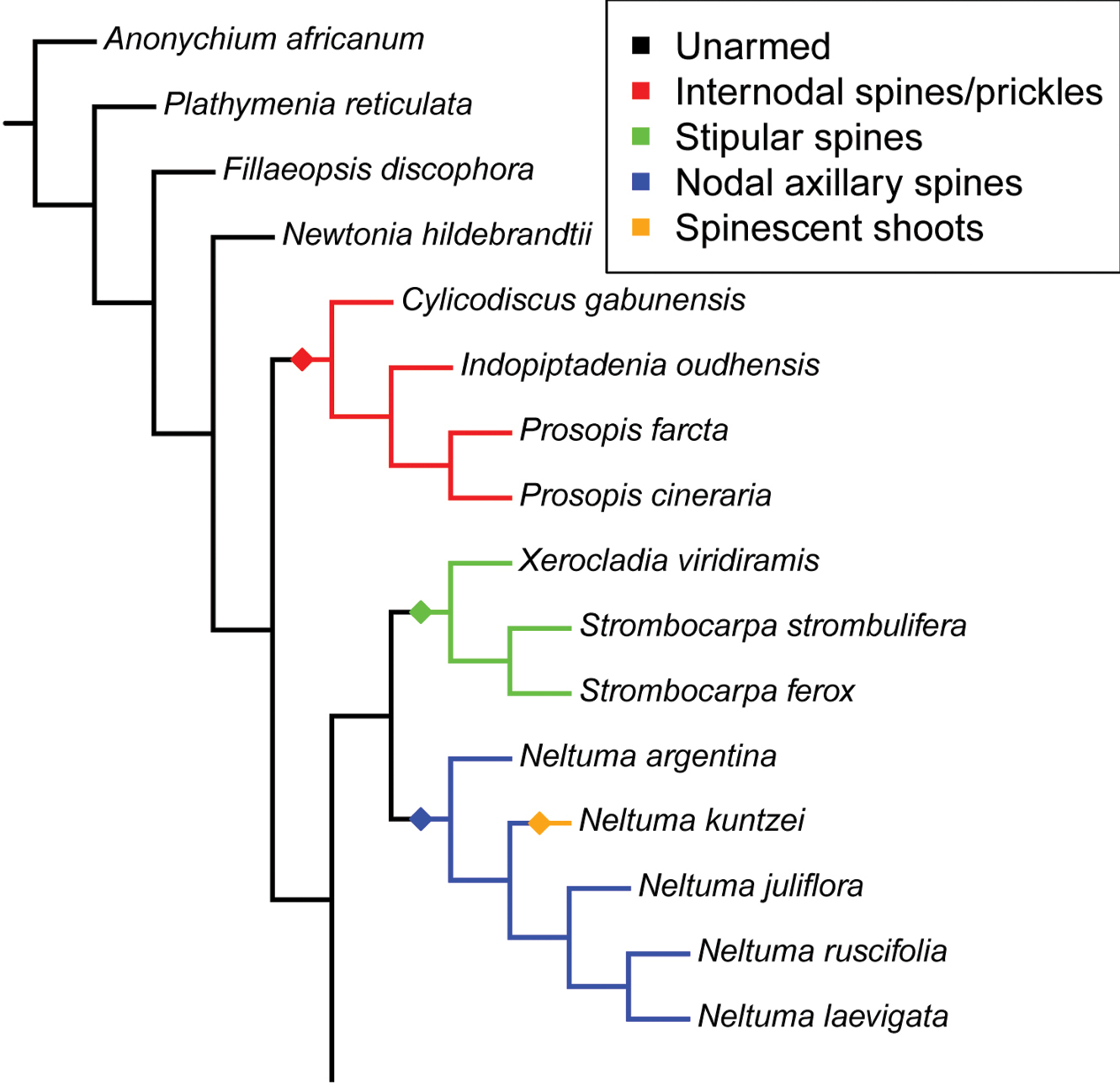
|
||
|
Independent evolutionary origins of stipular spines, axillary nodal spines and internodal spines across the segregate genera of the Prosopis s.l. grade. Diamonds indicate putative origins halfway along the branch subtending the clade with the character of interest. Note that, in the case of Neltuma kuntzei, a loss of axillary nodal spines, which are absent in that species, apparently coincides with an evolutionary gain of spinescent shoots (see also Fig. 3F) and with a shift to a largely aphyllous condition on the mature shoots. The reconstruction of armature characters shown here encompasses results of four independent optimisations of four types of armature, performed using the make.simmap option of R (R Core Team 2021) package phytools (Revell 2012), each with 500 simulations using the ARD model. Optimisations were performed on an ASTRAL phylogeny of the entire Caesalpinioideae, based on 821 single-copy genes (Ringelberg et al. 2022), but are here shown only for the Prosopis s.l. grade with standardised branch lengths. |